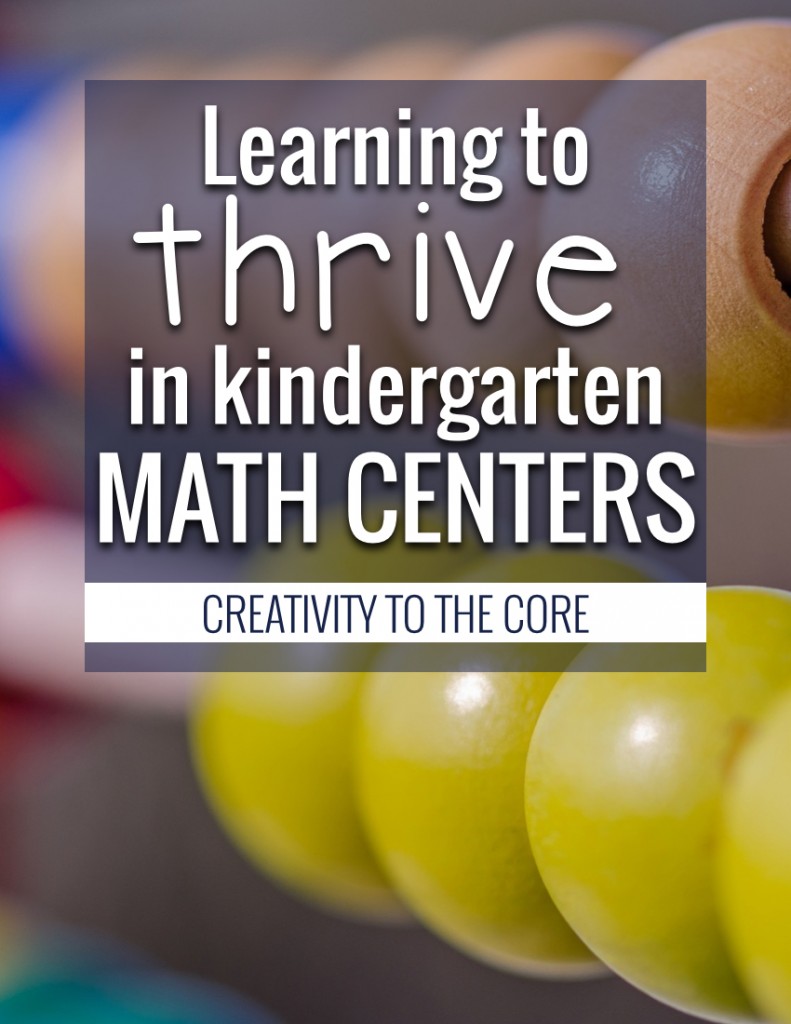 When I taught first grade, our math centers rocked. Like seriously, it was awesome. The kids were on task while using manipulatives, journals were getting done on time, each group came to me for small group, and we finished 3-4 rotations per day in about one hour and ten minutes. I used this organization of centers and small group to make our time together as successful as it could be.
When I taught first grade, our math centers rocked. Like seriously, it was awesome. The kids were on task while using manipulatives, journals were getting done on time, each group came to me for small group, and we finished 3-4 rotations per day in about one hour and ten minutes. I used this organization of centers and small group to make our time together as successful as it could be.
When I taught third grade, math was even more independent. We had math early finisher projects that the kids LOVED. The kids came to small group, had a computer center, and a math activity center. I pulled them for extra practice often, used lots of manipulatives to practice multiplication, and enjoyed watching them grow into upper elementary math scholars.
Teaching kindergarten is a totally different ball game. Independence is a far-fetched idea. I rarely get through more than two groups. I can no longer prep center activities that match our current skill. Centers are completely review. …And for a while, I felt awful.
Math was the one time of the day I would get anxiety. I had spent a lot of time this summer prepping and updating my math center resource so that I could use it in my classroom again. It had worked so well in first grade, and I just knew it would keep me super organized. I had the students grouped into 4 groups, storage for each day’s center, and rotation cards posted on a beautiful brand new huuuuggeeee pocket chart. 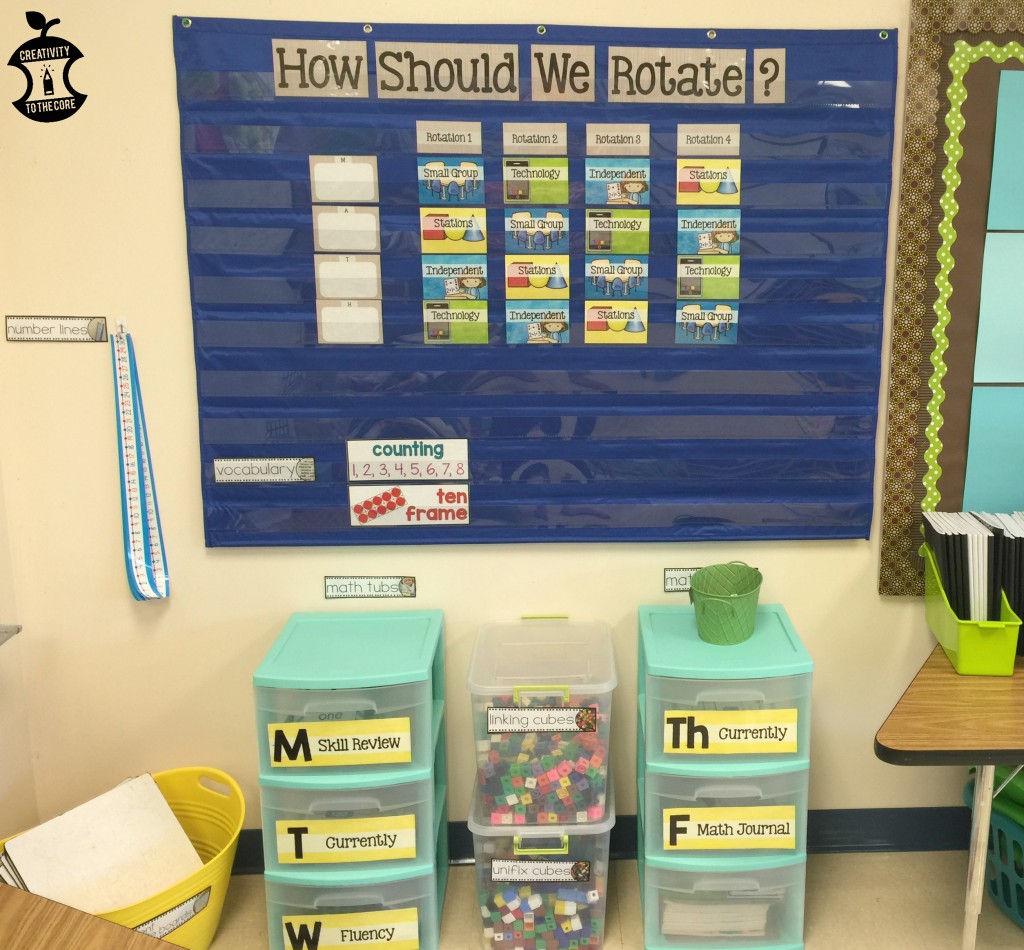 People, it didn’t work. It didn’t flow at all. It was not successful like it was in my first grade classroom. It was like my math block was completely planned out, and completely broken at the same time. And that’s when I realized my mistake. For some reason, I thought that a system that worked for seven year olds would work for five year olds. It sounds insane as I write it here. Of course it wouldn’t. But I will tell you that I tried to make it work. And I will tell you that I failed, miserably. Some parts of teaching are just trial and error.
People, it didn’t work. It didn’t flow at all. It was not successful like it was in my first grade classroom. It was like my math block was completely planned out, and completely broken at the same time. And that’s when I realized my mistake. For some reason, I thought that a system that worked for seven year olds would work for five year olds. It sounds insane as I write it here. Of course it wouldn’t. But I will tell you that I tried to make it work. And I will tell you that I failed, miserably. Some parts of teaching are just trial and error.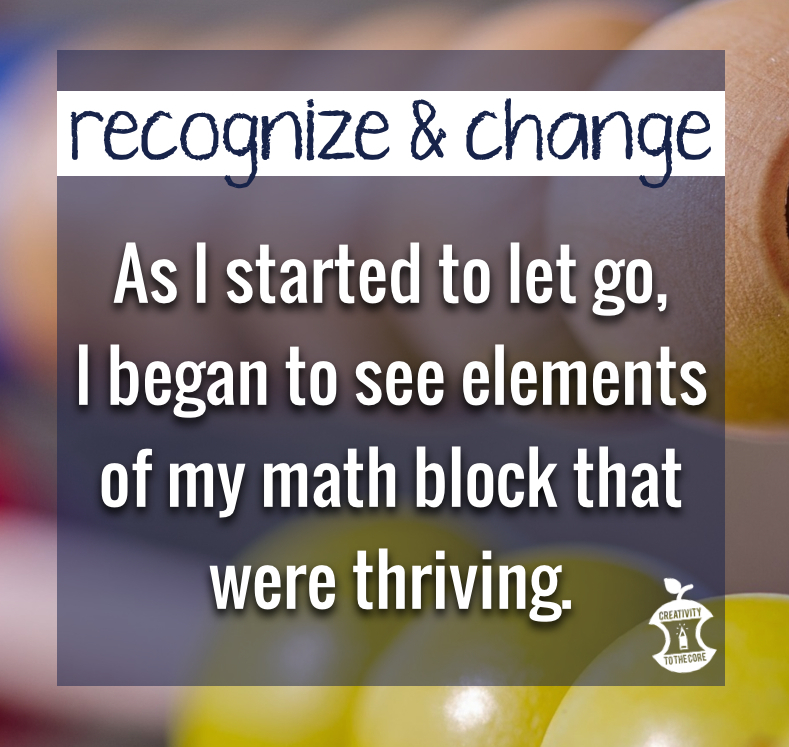 I decided that I needed to stop forcing my OCD on this hour of my day, because it was just making everything crazy chaotic. As I started to let go, I began to see elements of my math block that were thriving. Kids weren’t expected to switch activities as many times throughout the hour. Students were focusing on one task for longer periods of time. I was able to spend quality time with about 8 to 15 of my 19 students each day during small group.
I decided that I needed to stop forcing my OCD on this hour of my day, because it was just making everything crazy chaotic. As I started to let go, I began to see elements of my math block that were thriving. Kids weren’t expected to switch activities as many times throughout the hour. Students were focusing on one task for longer periods of time. I was able to spend quality time with about 8 to 15 of my 19 students each day during small group.
So…What has changed?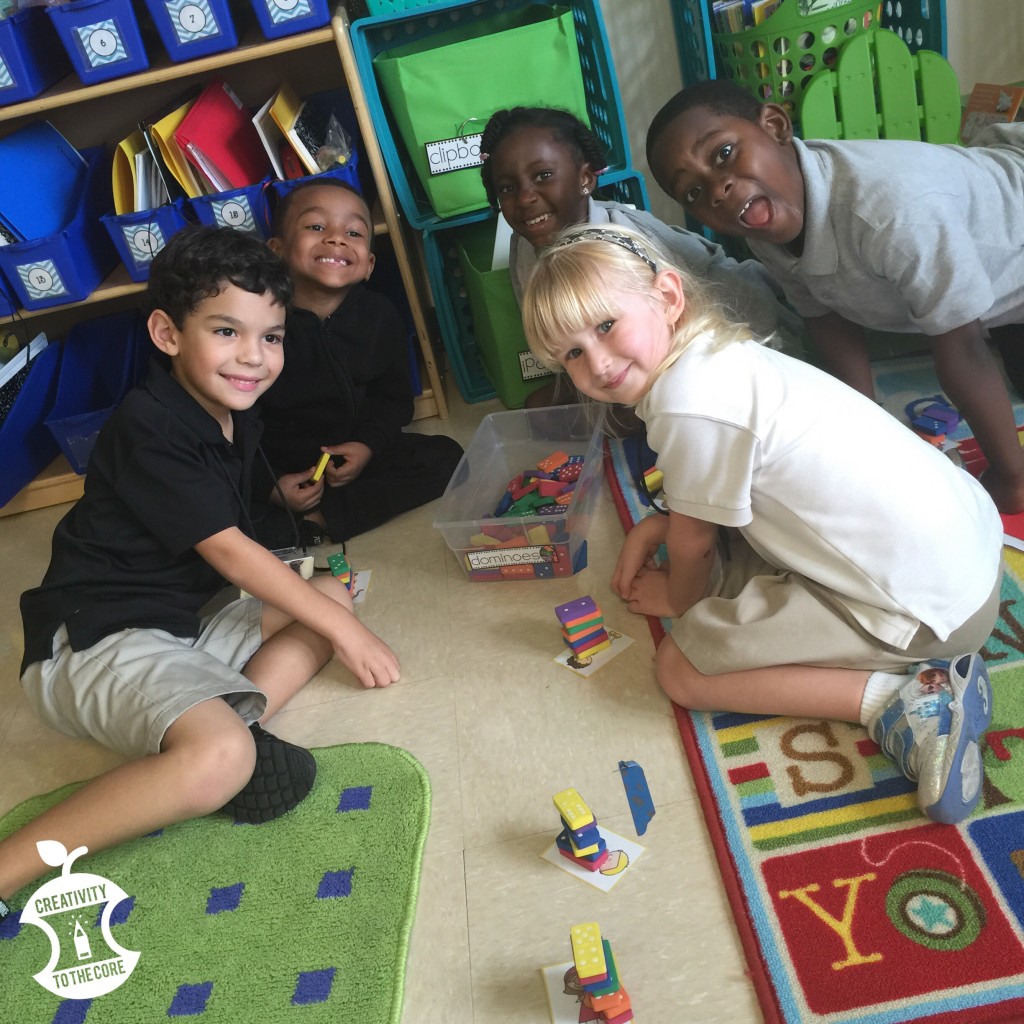
Switching from Small Group – This has been BY FAR the best change we have made. Students no longer switch centers on a regular schedule like they do during our literacy centers each morning. I pull a group of five students to my table at the beginning of our math block. As I see students who finish quickly or who are demonstrating the skill well, I dismiss them to the groups that are at centers. Usually, I will say, “Molly, you may go switch with Holly. Tell Holly to come to small group, and you can start working in her place.” Molly leaves small group. Holly comes to small group. If there is a student who is having trouble, this allows me to keep them with me even longer. Ta-da! (Super fancy, I know!)
Small Group Instruction – I usually meet with 8-15 students each afternoon depending on which kids are doing well and which need more assistance. Students stay at small group if they are having trouble. Kids come for five minutes if they can demonstrate the skill well.
Centers – Centers are now ALL review. (I used to change them every week or two. Now, they remain the same for our entire chapter or unit, unless I see kids beginning to work less and play more.) During these centers, I am pulling kids and swapping kids between activities as I see fit. It just seems to work for us this year.
1. One center usually includes creating addition sentences on white boards. For some reason, the kids love this. (I’ll take it!!!) 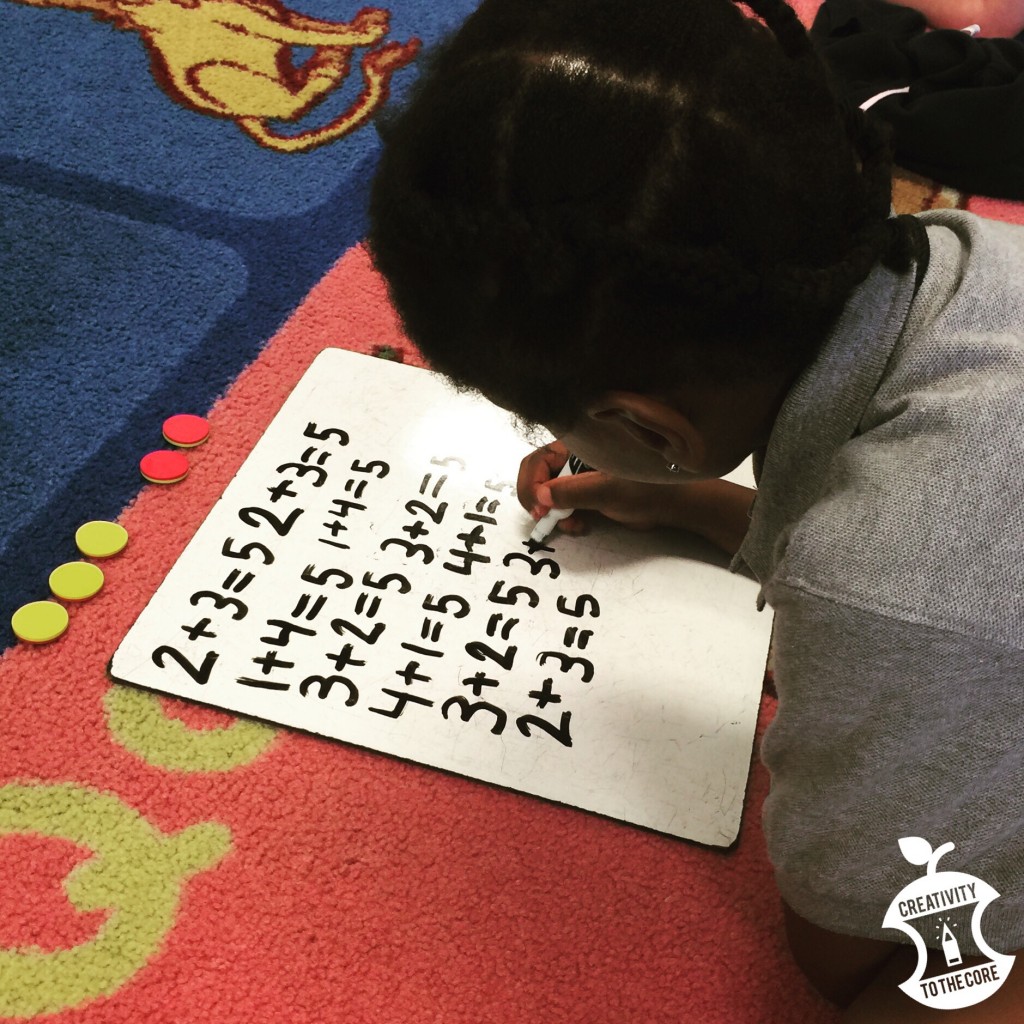 2. Another center is always ten frame fluency. Students quiz each other on how quickly they can identify the number in the ten frame as well as how many more are needed in the ten frame to make a ten. This helps them practice subtizing and addition fluency.
2. Another center is always ten frame fluency. Students quiz each other on how quickly they can identify the number in the ten frame as well as how many more are needed in the ten frame to make a ten. This helps them practice subtizing and addition fluency.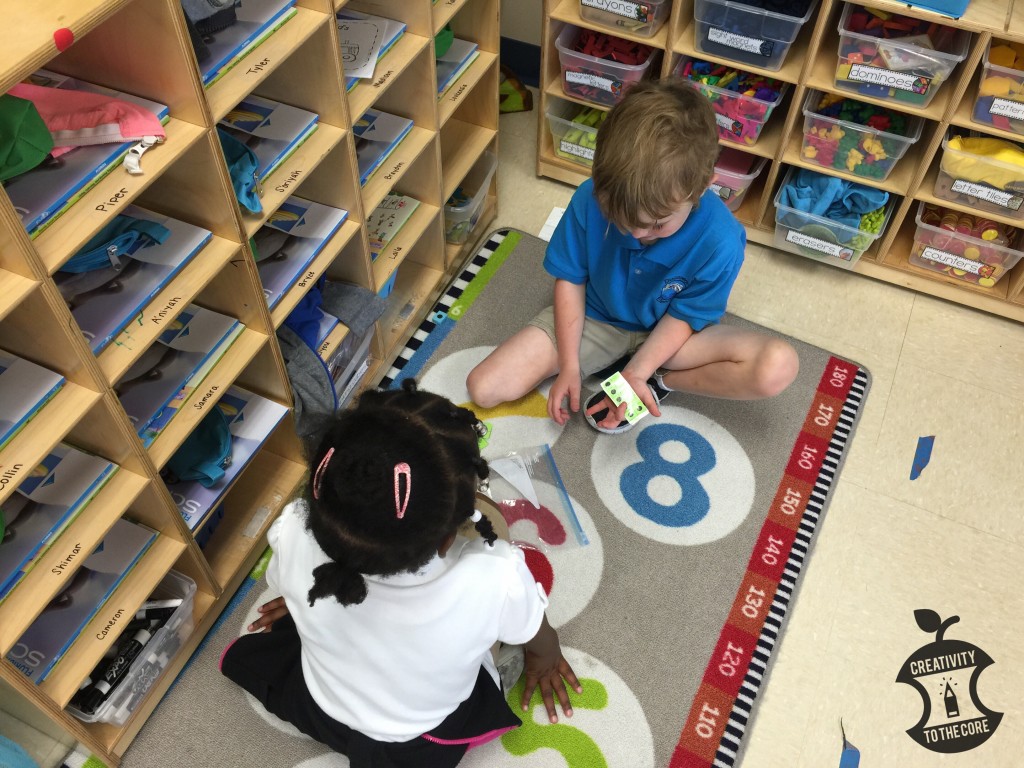 3. The last center is a review activity. This may include ordering number cards, using links to build numbers, comparing numbers, or counting by 5’s and 10’s. You can find this popsicle center here.
3. The last center is a review activity. This may include ordering number cards, using links to build numbers, comparing numbers, or counting by 5’s and 10’s. You can find this popsicle center here.
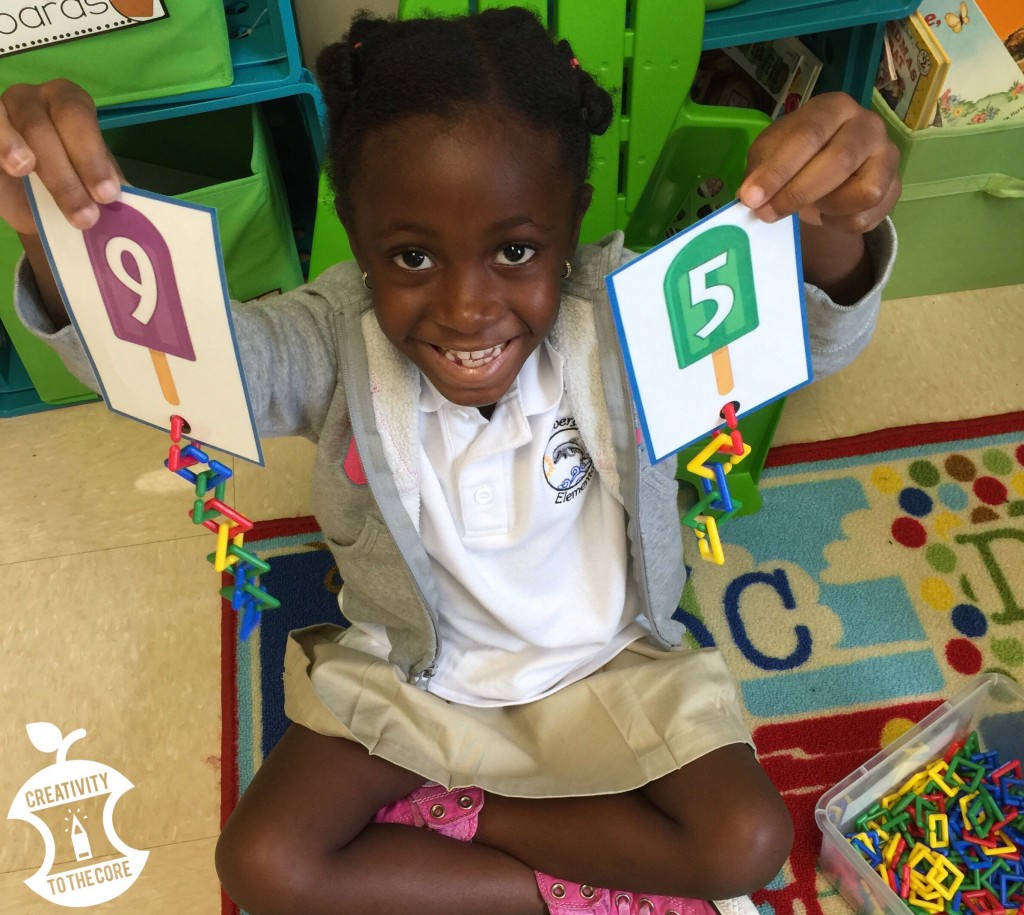
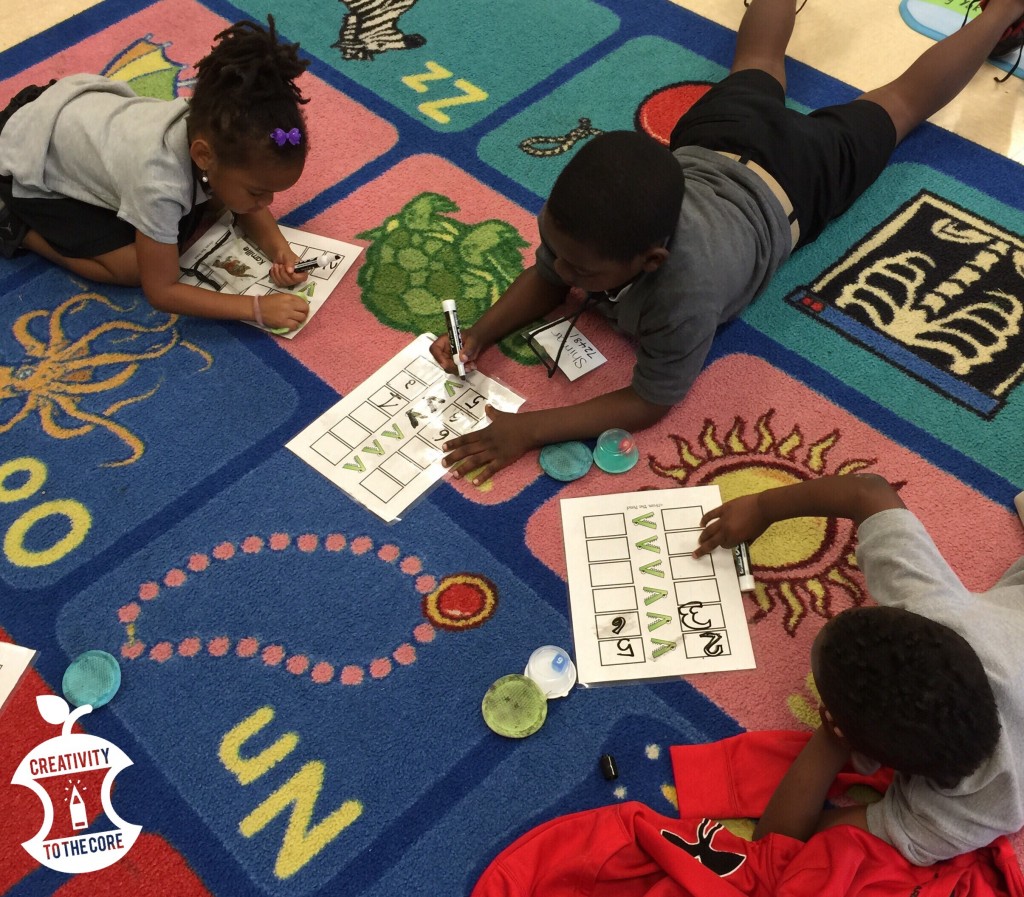
4. Technology stays pretty much the same because our school requires us to use a program called i-Ready. We also have 3 iPads that students may play any math games on. Butterfly Math is my current favorite.
What’s the lesson? 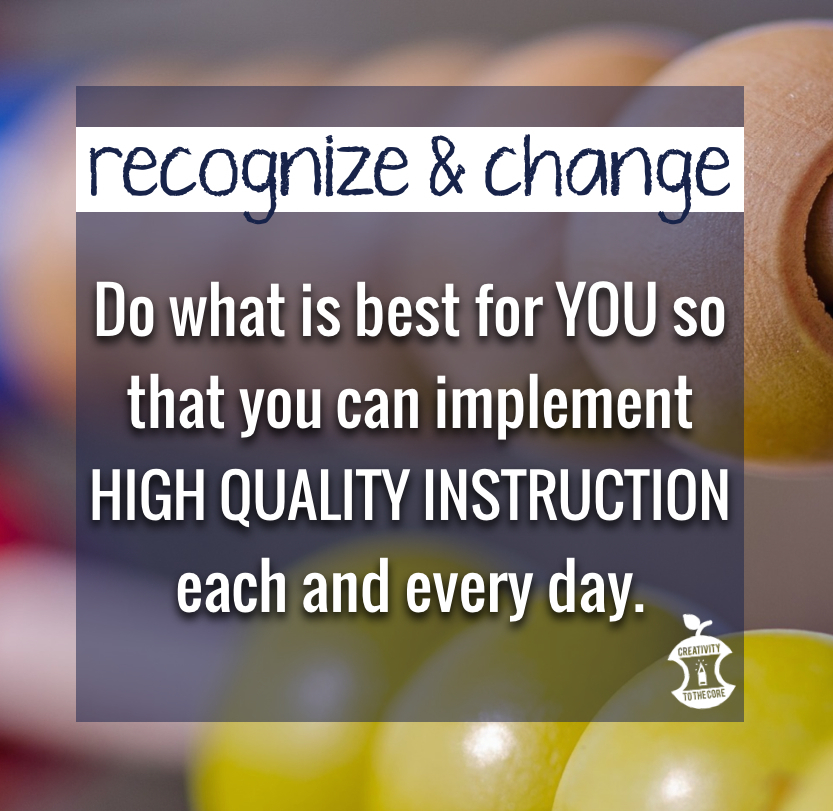 Do what is best for your kids. Do what is best for your classroom. Do what is best for you so that you can implement high quality instruction each and every day. What works beautifully one year, may be the bane of your existence the next…I exaggerate, but you understand. Your best instruction will be exposed when have found your groove. Be open to change. Change as you go. Find your groove, and teach on!
Do what is best for your kids. Do what is best for your classroom. Do what is best for you so that you can implement high quality instruction each and every day. What works beautifully one year, may be the bane of your existence the next…I exaggerate, but you understand. Your best instruction will be exposed when have found your groove. Be open to change. Change as you go. Find your groove, and teach on!
Want to read more?

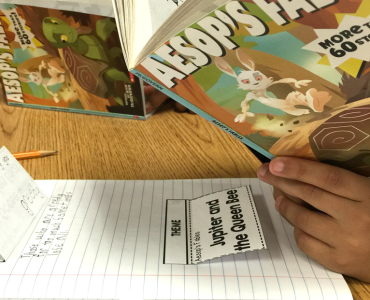
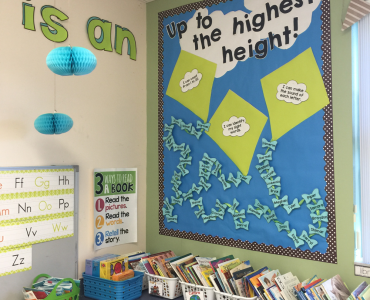
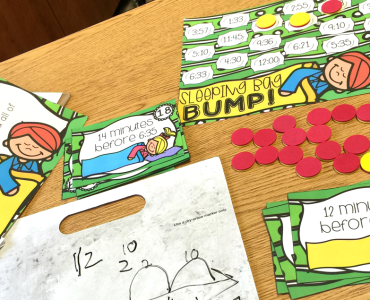

I would love to know more about what you did for third grade centers! Everything you have said is what I aspire my classroom to be like.
Here’s a few posts from when I taught third grade. 3rd Grade Schedule. Co-Teaching Reading in 3rd Grade. I co-taught, so it may be slightly different. However, you will be able to see what our reading block and centers looked like. I only taught math centers on occasion in third grade. But, here is a post about one concept we taught in 3rd grade math: Open Number Lines
I was wondering if you can tell me more about iReady. Does it cost money and is it something that is better implemented as a whole school? Currently I use FrontRow, but I am open to exploring new adaptive programs.
iReady is a program that schools or districts purchase. Yes, it is implemented as a whole school. 🙂
How do you run your small group if you do centers like this. I’m in my first year of kindergarten (came from 1st) and am having the exact same problems with centers. Do you have a certain lesson you teach each day?
While my students are in centers, I always have 4 to 5 kids with me. At the beginning of the year, I was rotating each group just as I would in literacy centers. However, I discovered that our math centers took longer to clean up and were not conducive to switching for four rotations. We would always run out of time. So, I take 4-5 kids with me while the others are in centers. As I see kids grasping the concept for the day, I let them go and direct them to a specific center. I also ask them to send a child from that center to me at small group. They basically do a swap. This works wonderfully for us because students can work longer at a center if they are enjoying it, students in small group can stay longer if I see it is needed, and I can release students from small group quickly if they have mastered the concept. The lessons I teach are generally consistent with our textbook, but I do not use the textbook often. I just teach the concept in a more hands on way in small group. Hope this helps!